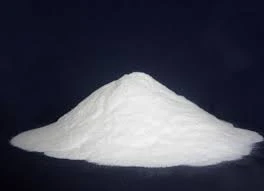The Versatility of Cellulose Glue A Sustainable Adhesive Option
Cellulose glue, derived from natural cellulose fibers, represents an innovative solution for various bonding needs. As the world increasingly turns towards sustainable and eco-friendly materials, cellulose glue stands out as an exemplary option owing to its biocompatibility, non-toxicity, and effectiveness in diverse applications.
Composition and Properties
Cellulose glue is primarily made from cellulose, the most abundant organic polymer on Earth. This biopolymer is extracted from plant materials, making it renewable and biodegradable. The glue may also contain additives that enhance its bonding properties, stability, and resistance to moisture. One of its most significant advantages is its ability to form a strong adhesive bond while remaining non-toxic, which is crucial for applications in areas such as woodworking, arts and crafts, and packaging.
Applications of Cellulose Glue
The versatility of cellulose glue is evident in its wide range of applications
. In the woodworking industry, it is commonly used for joining veneers, laminating surfaces, and finishing wooden products. Woodworkers appreciate its slow drying time, which allows for adjustments before the adhesive sets. Furthermore, the clarity of the glue, once dried, ensures that it does not mar the aesthetic appeal of the wood, making it ideal for high-quality finishes.cellulose glue

In arts and crafts, cellulose glue is popular among hobbyists and professionals alike. It is particularly favored for paper products, model-making, and scrapbooking because it dries clear and flexible. This flexibility is important when working with delicate materials, allowing for the movement and expansion of the substrate without compromising the bond.
Furthermore, cellulose glue plays a crucial role in the packaging industry. Its ability to create strong, durable bonds makes it suitable for sealing boxes and containers while maintaining the integrity of the packaging materials. As the demand for sustainable packaging options grows, cellulose glue represents an ecological alternative to synthetic adhesives, aligning with the industry’s push towards reducing plastic and harmful chemical usage.
Environmental Impact
With growing concerns over environmental sustainability and the toxicity of many traditional adhesives, cellulose glue provides a responsible choice. Its biodegradable nature means that it breaks down naturally over time, minimizing its impact on the environment. Additionally, because it is derived from renewable resources, the use of cellulose glue contributes to a more circular economy. Manufacturers and consumers can take comfort in knowing that their adhesive choice supports ecological practices.
Conclusion
In conclusion, cellulose glue epitomizes the intersection of functionality and sustainability. Its diverse applications in woodworking, arts and crafts, and packaging industries, coupled with its eco-friendly properties, make it a valuable adhesive option. As consumers and industries alike continue to prioritize sustainability, cellulose glue is poised to play an increasingly significant role in the future of adhesive technologies. By choosing cellulose glue, we not only enhance our projects with a reliable adhesive but also contribute to a healthier planet. Embracing such materials is a step towards more responsible consumption, aligning our practices with environmental stewardship.
-
Rdp Powder: Key Considerations for Wholesalers in the Building Materials IndustryNewsJul.08,2025
-
Key Considerations for Wholesalers: Navigating the World of Hpmc - Based ProductsNewsJul.08,2025
-
Hpmc Detergent: Key Considerations for WholesalersNewsJul.08,2025
-
Key Considerations for Wholesalers: China Hpmc For Tile Adhesive, Coating Additives, Concrete Additives, and MoreNewsJul.08,2025
-
Crucial Considerations for Wholesalers: Navigating the World of Construction MaterialsNewsJul.08,2025
-
Key Considerations for Wholesalers Sourcing Additive For Cement, Additive For Concrete, Additive For Putty from Additive Manufacturer Shijiazhuang Gaocheng District Yongfeng Cellulose Co., Ltd.NewsJul.08,2025




